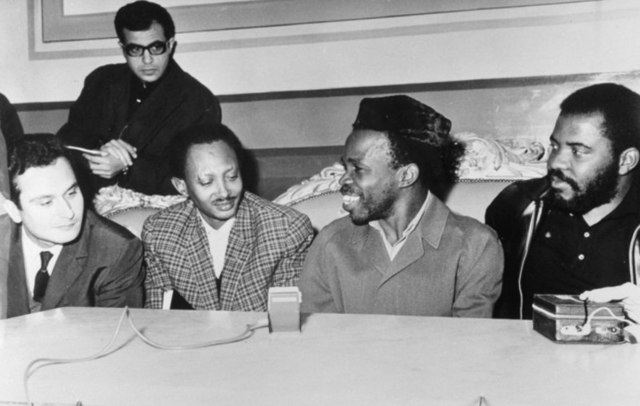The Simba rebellion, also known as the Orientale revolt, was a regional uprising which took place in the Democratic Republic of the Congo between 1963 and 1965 in the wider context of the Congo Crisis and the Cold War. The rebellion, located in the east of the country, was led by the followers of Patrice Lumumba, who had been ousted from power in 1960 by Joseph Kasa-Vubu and Joseph-Désiré Mobutu and subsequently killed in January 1961 in Katanga. The rebellion was contemporaneous with the Kwilu rebellion led by fellow Lumumbist Pierre Mulele in central Congo.
Gaston Soumialot (center right) in 1965
Christophe Gbenye (left) and General Nicholas Olenga (right), before the Patrice Lumumba monument in Stanleyville, 1964
Official pass issued by the People's Republic of the Congo, the communist government declared by the Simbas
Soviet explosives seized by the Congolese army from the Simbas
The Congo Crisis was a period of political upheaval and conflict between 1960 and 1965 in the Republic of the Congo. The crisis began almost immediately after the Congo became independent from Belgium and ended, unofficially, with the entire country under the rule of Joseph-Désiré Mobutu. Constituting a series of civil wars, the Congo Crisis was also a proxy conflict in the Cold War, in which the Soviet Union and the United States supported opposing factions. Around 100,000 people are believed to have been killed during the crisis.
Image: UN Baluba camp
Image: Wounded Swedish ONUC soldier
Image: Dragonrouge 2
Image: Jeunesse BALUBAKAT








